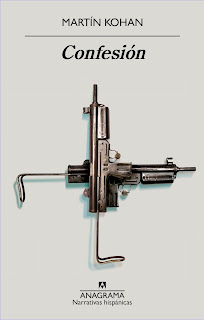
Kohan, Martín. Confesión. Barcelona: Anagrama, 2020, 197 páginas. ISBN 978-84-339-9899-6
Tres zonas delimitan la narración de la novela, donde se despliegan escenas atravesadas por episodios y nombres de la historia política y por los pliegues de la ficción; los nombres de la historia condensan los sentidos que luego la invención novelesca expande. En el primer relato un espacio metonímico gobierna la narración: el confesionario, donde el padre Suñé escucha a Mirta López, obsesionada con la figura del mayor de los Videla. En la segunda instancia, un operativo del ERP contra Videla irrumpe como la historia setentista para resignificarse en la tercera parte, como síntesis y estupor de la novela toda. “Confesión” narra lo no dicho, lo apenas dicho, la zona que la memoria ha elegido para esconder las culpas o escamotear las vergüenzas: los modos que elige la memoria del olvido para volver desde el pasado al presente.
Abstract
Three zones delimit the narration of the novel, where scenes traversed by episodes and names from political history and folds of fiction unfold; the names of the story condense the meanings that later the fictional invention expands. In the first story, a metonymic space governs the narrative: the confessional, where Father Suñé listens to Mirta López, obsessed with the figure of the oldest of the Videla. In the second instance, an ERP operation against Videla bursts in like the seventies story to resignify itself in the third part as a synthesis and amazement of the whole novel. Confession narrates the unsaid, the barely said, the area that memory has chosen to hide the guilt or hide the shame, the ways that the memory of oblivion chooses to return from the past to the present.


